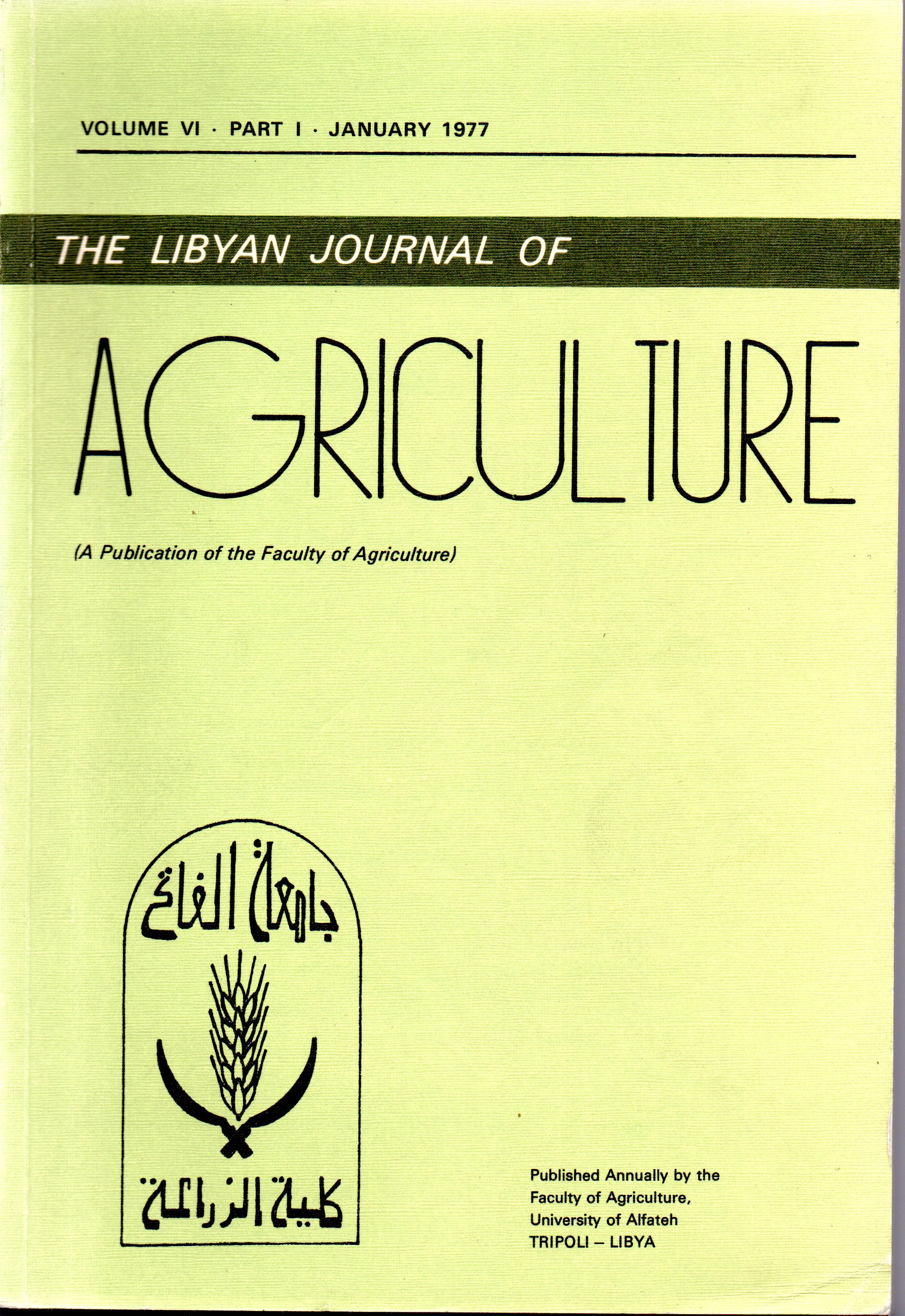The Effect of Row and Plant Spacings on Yield and Yield Components of Wheat under Kufra Environment
Main Article Content
Abstract
The effect of row and plant spacing on the yield and yield components of wheat cv. ‘Sidi Misri 1' was studied under irrigation at the Kufra Oasis in the Libyan desert. Increasing the plant to plant as well as row to row spacing increased the number of tillers per plant. Row spacing between 15 cm and 45 cm had no effect on dry matter production. The narrowest plant spacing (5 cm) had higher dry matter production than the widest spacing (20 cm). There was no effect of row or plant spacing on the grain yield and grain size. While plant spacing did not affect the number of grains per spike, narrow row spacing had a lower number of grains per spike than the wider row spacing. Considering different row and plant spacing to obtain the same plant population, increasing plant density decreased tillering. There was no effect of plant density from 16-66 plants per m2 on grain yield and other yield components.

